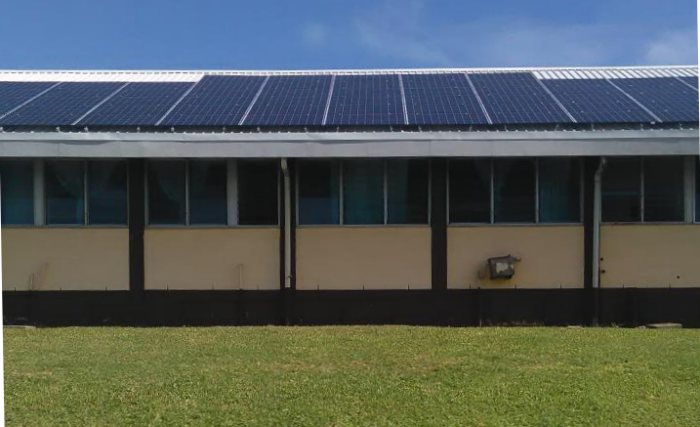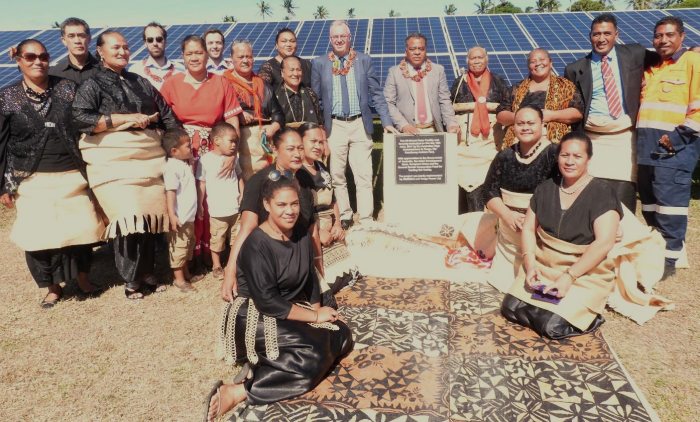
Image: Tonga Power
The island nation of Tonga is closing in on its renewable energy target with a helping hand from solar power and the international community, including Australia.
The most recent project of note is a rooftop installation at the Prince Wellington Ngu Hospital in Vava’u. While only 20kW, it also features a 96 kWh battery storage system. The system was officially inaugurated a few days ago by the Crown Prince of Tonga, Tupouto’a ‘Ulukalala.
The hospital’s electricity needs are modest and the solar panels are expected to generate the equivalent of 43% of the facility’s electricity consumption.
Germany provided all the funding for the solar + storage system, around EUR 100,000.
“Projects of this nature really make a difference to the Island communities,” said Gerard Tiedemann, Ambassador to the Federal Republic of Germany.
Ha Masani Solar Facility – Australia Pitches In
Another, larger installation to recently start operations in Tonga is the Ha Masani Solar Facility on Haápai, which has 550 kW capacity and 660 kWh of battery storage. The Australian Government helped support construction of the project and the plant was officially inaugurated by Australia’s High Commissioner to Tonga, Andrew Ford, in the middle of June.

Image: Tonga Power
“The project highlights our commitment to climate action, supporting the uptake of innovative technologies, improving energy efficiency and providing renewable energy to remote communities,” said High Commissioner Ford.
The system has enabled Haápai to be the first island in Tonga to reach 50% of electricity generation from renewable energy sources.
Other solar energy projects in Tonga include the Maama Mai Solar Facility (Maama Mai means “let there be light”), which has been operating since 2012 and generating an average of 1,880 MWh of clean electricity per annum. Also in Tonga are the La’a Lahi (420kW) and Mata ‘o e La’a (1MW) solar facilities.
Tonga Reducing Its Diesel Dependence
Tonga is a Polynesian kingdom of more than 170 South Pacific islands, situated approximately 3,200 kilometres from the closest point in Australia. The kingdom is already experiencing the effects of climate change; with reduction in wet season rainfall, increasing temperatures and erosion associated with rising sea levels.
Like many island nations, the tyranny of distance impacts on electricity prices in Tonga – and associated carbon emissions. Mains grid electricity is expensive, costing the equivalent of between AUD 43 cents and 48 cents per kilowatt hour. The World Bank puts Tonga’s GNI (Gross National Income) per capita at approximately AUD $5,320.
According to Tonga Power CEO Robert Matthews, more than 91% of the nation’s grid electricity demand is provided by diesel generators. Tonga’s government has set a target of 50% renewables by 2020 and solar power is playing an important role in helping the nation wean itself off diesel.

 RSS - Posts
RSS - Posts



Speak Your Mind